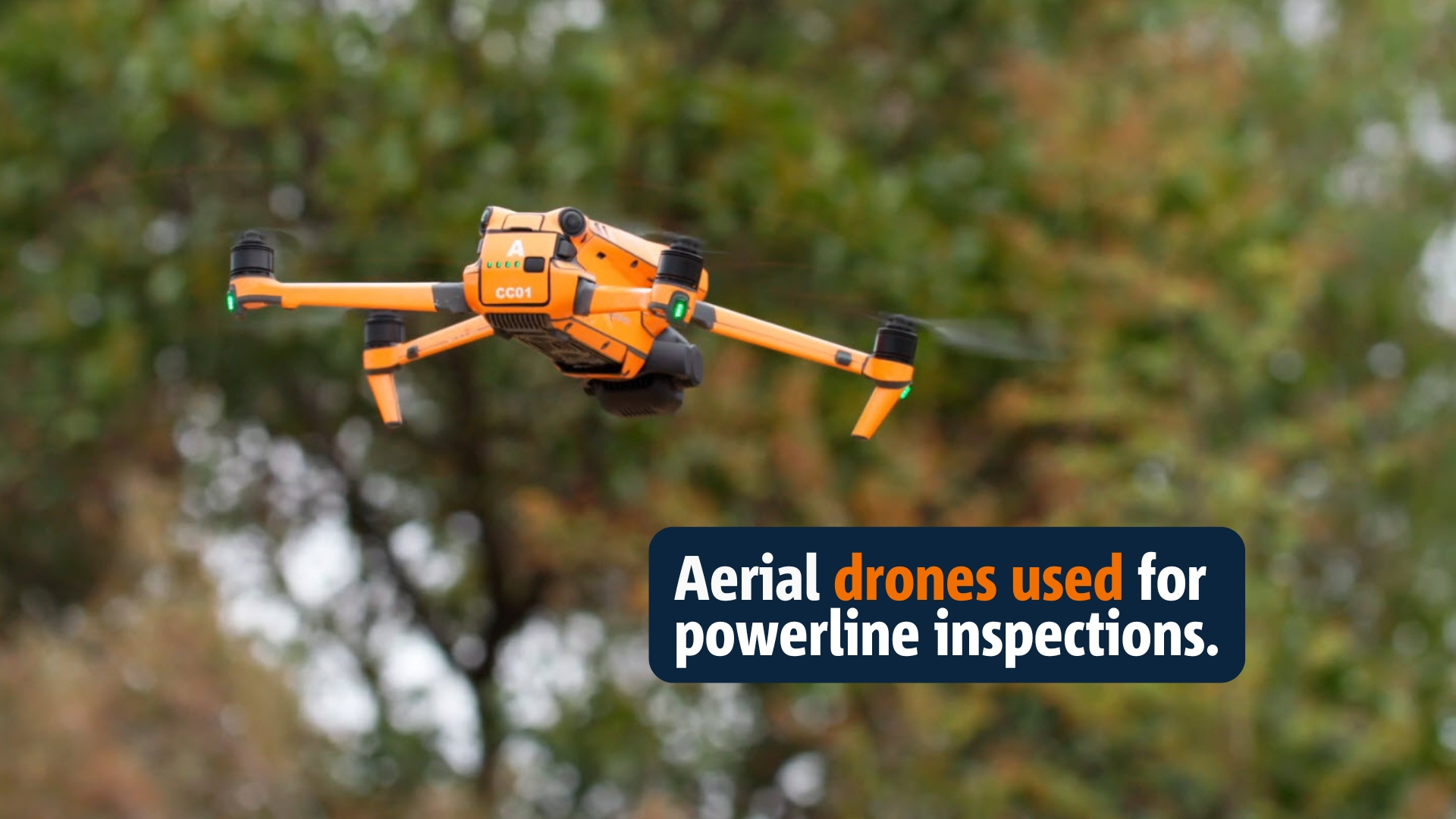We use flying drones for general asset inspections, to find electrical faults and to string powerlines over rough or sensitive terrain.
Drones allow us to be less intrusive, more efficient, and safer when inspecting powerlines for maintenance issues. We mainly use them in regional areas but may also inspect our powerlines in metropolitan Adelaide.
Our drones are easily identifiable as they are branded bright orange or yellow.
Why we use aerial drones to inspect powerlines?
Drones allow us to inspect the top of power equipment and quickly find faults, such as those caused by lightning, where we would otherwise have to manually inspect each pole with a ladder or elevated work platform (EWP). This also improves the safety for our staff, as they can inspect assets from the ground without the risk of having to carry and climb ladders on uneven ground.
Drones further allow us to reduce the impact on farm properties as there’s little to no need to drive through paddocks or crops and drones do not scare livestock like helicopters do.
Trained professional drone pilots
We have a team of trained and CASA-licensed drone pilots who are accredited to operate with weight up to 25kg. We are also a corporate member of the Australian Association for Uncrewed Systems.
There are strict rules and regulations when flying drones and that’s why each of our pilots:
- Are licenced to operate drones and aviation radios
- Log a flight plan every time they operate a drone
- Keep their drone at least 30m clear of any people
- Only inspect our infrastructure
Drones in our fleet
| Drone | How we use it |
|---|---|
|
Hexacopter Matrice 600 The hexacopter drone has 6 motors, can lift up to 5kg and is used to string lines over as much as 500m. Our pilots use them in areas that are hard to access such as areas with dense vegetation, or when working in areas that are culturally significant, to not cause any damage. |
|
|
Quadcopter Matrice 300 The quadcopter drone has four motors and is primarily used to inspect our network for defects to prevent outages. These drones are equipped with laser measuring sensors, thermal imaging and LiDAR to ensure our assets are in good working order and vegetation is not encroaching our powerline clearances. |
|
|
Mavic Pro Smaller drones under 2 kg are used by our powerline workers primarily in our regional areas as a first response tool after a weather event to find pin holes after a lightning storm. These are small and simple to deploy for small jobs where there might be access issues due to crops, rough terrain or muddy roads. |
Using drones to string powerlines video
View the video below to see an example of how we use drones to string powerlines over tricky terrain.
